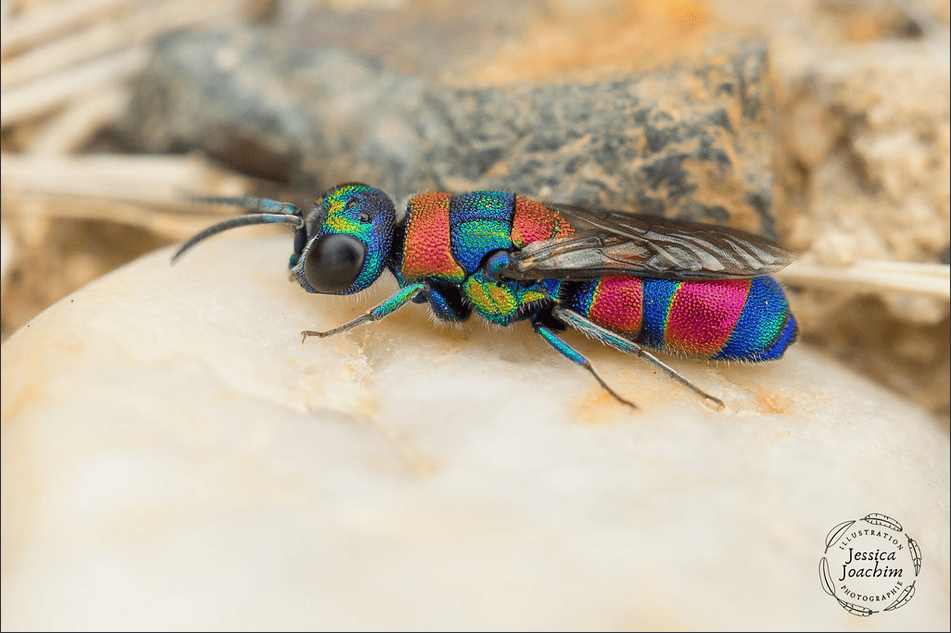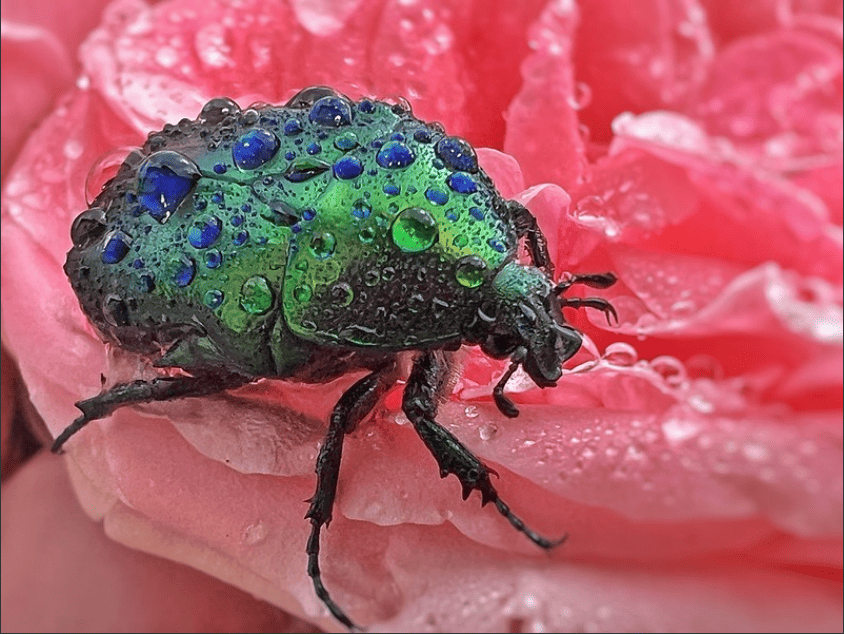Main photo by Dusan Beno

Above, 'Chrysis semicincta' by Jessica JOACHIM

Above, 'Cotinis Mutabilis, also known as the Figeater Beetle' by Cotinis Mutabilis

Above photo by philux66

Above, 'Green Tortoise Beetle, Cassida viridis' by Duncan Cooke
Length; 7 - 10mm.
Distribution; Widespread in England and Wales, although sparse in the north and rarer in Scotland.
Habitat; Grassland, Heathland & Moorland, Farmland, Wetlands, Woodland & Gardens.
Found; April to October.
The Green Tortoise Beetle is one of a group of several closely related beetles. Host plants include White Dead-nettle, Hemp Nettles, Hedge Woundwort, Gypsywort and Water Mint and is often found in gardens. When disturbed, the adults behave just like tortoises, retracting their antennae and feet, and pulling their 'shell' tight down around them as they grip tightly on to the leaf they are.
The Green tortoise beetle is round, flattened and lime green. Tortoise beetles are easy to identify as a group, but there are several closely related species that are very difficult to tell apart. the Green Tortoise Beetle is entirely green and generally lacks the markings of other species. Cassida viridis is similar to Cassida rubiginosa but can be distinguished by the rounded rear corners of the pronotum which are sharp in C. rubiginosa. It is also usually more apple green in colour.
Adults spend a few weeks feeding on host foliage and possibly also pollen before mating in April and May and ovipositing from May to July. Between 1 and 10 eggs laid in firm-walled and distinctive egg cases which are stuck to stems or under lower leaves and covered with frass and leaf fragments. They hatch within 6 to 10 days and the larvae initially feed below the leaves, moving to the upper surface as they grow, they pass through 5 instars and develop rapidly. They are fully grown within 4 to 6 weeks.
Pupation occurs from June to September. The fully grown larvae move to stems and petioles and become attached by a secretion before they pupate. This stage is also brief, generally lasting about a week, and new generation adults emerge from July to October.

Above 'Green vegetable or Shield bug' by Bernard Spragg. NZ
Nezara viridula, commonly known as the southern green stink bug, southern green shield bug or green vegetable bug, is a plant-feeding stink bug. Believed to have originated in Ethiopia, it can now be found around the world.

Above, 'Golden Beetle' by Ivan Anisimov

No probs, it gives me an excuse to scroll through flickr 👍